The World Nomads Podcast: USA
Embracing the kitsch in America’s South, what are the bees up to in Brooklyn? The budget travel idea proving a hit, and exploring New York with the Bowery Boys.
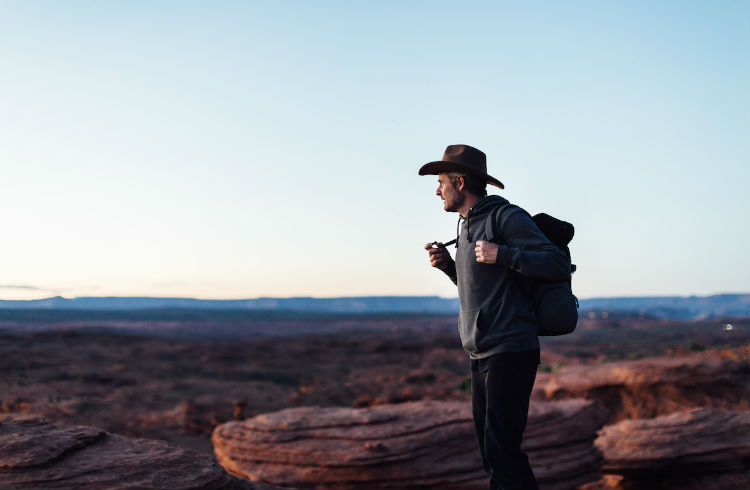 Photo © iStock/deimagine
Photo © iStock/deimagine
Listen Now
Episode 10: USA
We explore the USA the World Nomads way. Sure, go ahead and tick off the "bucket list" of Americana, but how do you really get under the skin... how do you find adventure beyond the guide books? Well, you start here.
Want to know more about the US? Head to our Stories section to delve a little deeper.
What's in the Episode
00:08 - Welcome
01:11 – Quiz Question
01:34 – Tom Myers from the Bowery Boys podcast
“…. that’s the fortunate thing about having New York as your focus because there are an unlimited number of stories. We can even revisit stories and tell them from another direction. And often when we get back to that story, the subject has already changed because history is alive.” – Tom Myers
09:09 – World Nomads Head of the Americas Christina Tunnah reveals the USA’s growing artisan culture
“…Yeah, no, it's huge. I think you'd be hard pushed to go anywhere in the US where there isn't that element. Where you can source artisan foods, cheeses, wines, liquors, anything like that.” – Christina Tunnah
16:31 – Meet Morgan currently traveling South America
19:05 – Blogger Caroline Eubanks encourages us to embrace the kitsch in Southern USA
24:41 – Travel News and the Belgian guy who believes he’s hit on a great budget travel idea
30:00 – Travel Writer Time Neville on turning your passion into a profession
“…I think you have to make a serious go of it and be ready to make some sacrifices to be able to come out on the other end of that and have the career that a lot of people will obviously hold as a dream career.” – Tim Neville
35:40 – Quiz Question Answer
36:42 – What’s next in Episode 11
Who's on the Show?
Christina Tunnah World Nomads Head of The Americas
Tom Myers from the Bowery Boys podcast. The Bowery Boys, Greg Young and Tom Meyers, have lived in New York for the past 20 years and have been curious about the city since the day they arrived. Join them for a fun take on history, a “romp down the back alleys of New York City.”
Blogger and World Nomads contributor Caroline Eubanks. Caroline also has a website This Is My South which you can check out here.
Freelance travel journalist and World Nomads writing scholarship mentor Tim Neville.
Resources & Links
As mentioned in Travel News here is our Boycott or Not article.
Scholarships Newsletter: Sign up for scholarships news and see what opportunities are live here.
Follow World Nomads on Instagram for the latest stories, and #WorldNomads for your chance to be featured.
And check out these images of maya beach in Thailand - "The Beach" we mentioned in travel news.
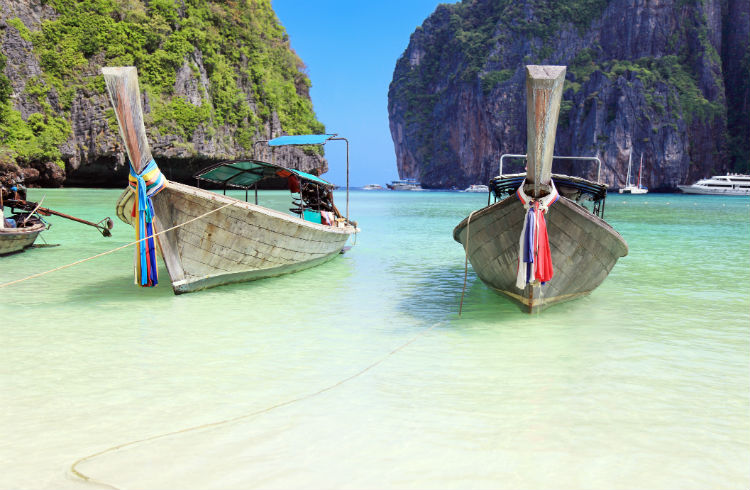
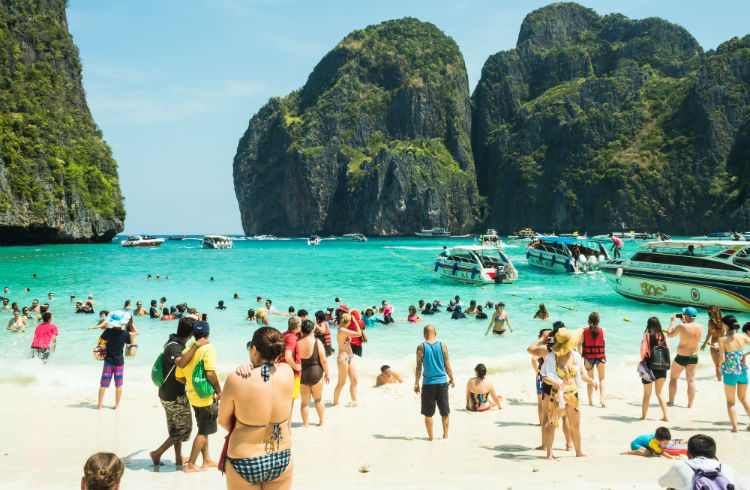
Want to Share This Episode?
Copy this code onto your web page:
<iframe width="100%" height="200" src="https://player.whooshkaa.com/player/episode/id/174722?visual=true&sharing=true" frameborder="0" style="width: 100%; height: 200px"></iframe>
Want to Talk to us?
We want to hear from you! If you have any travel insurance questions to Ask Phil, want to give us feedback on the episode, or have suggestions for topics you'd like us to cover, email us at podcast@worldnomads.com
Sign up for Podcast News
Explore your boundaries and discover your next adventure with The World Nomads Podcast. Hosted by Podcast Producer Kim Napier and World Nomads Phil Sylvester, each episode will take you around the world with insights into destinations from travelers and experts. They’ll share the latest in travel news, answer your travel questions and fill you in on what World Nomads is up to, including the latest scholarships and guides. The World Nomads Podcast is not your usual travel Podcast. It’s everything for the adventurous, independent traveler. Don’t miss out. Subscribe today.
Announcer: The World Nomads podcast. It's not your usual travel podcast. It's everything for the adventurous independent traveler.
Kim: Welcome to our podcast delivered by World Nomads, the travel lifestyle and insurance brand covering more than half a million travelers. It's always nice to be with you. My name is Kim.
Phil:And I'm Phil and in our tenth episode of the World Nomads Podcast, we are focusing on the United States of America. The third most populous country in the world and also one of the world's mega-diverse countries [00:00:30] given its geography, climate and wildlife.
Kim:And New York is the largest city in the U.S. by population, which is why it is a never-ending source Phil of stories for a podcast called The Bowery Boys, in which they explore the history, the buildings, the streets, the landmarks and of course the characters. We're going to speak to one of the guys behind that podcast, Tom Meyers.
And Christina Tunnah, head of the Americas for World Nomads, she will join us here in the studio to chat about her hometown, cowboys, and America's growing artisan culture.
[00:01:00] Also in this episode, embracing the kitsch in America's south, and we check in with our travel scholarship mentor, a man you're in love with, Tim Neville.
But before all that, let's get your quiz question.
Phil:Okay. This is a bit of a mind bender. Are you ready? Where in the world will you find the largest island in a lake, on an island in a lake, on an island?
Kim:Say that again.
Phil:An island in a lake, on an island in a lake, on an island.
Kim:That's like a turducken.
Phil:[00:01:30] The turducken of geography. Where is it?
Kim:We'll find out at the end of the episode.
Well podcasting and podcast consumption is huge in the U.S. Greg Young and Tom Meyers recorded The Bowery Boys podcast in 2007, we've only just kicked ours off in 2017, telling fascinating stories about New York.
Tom Meyers:The opening day of the New York City Subway-
Speaker 4:Stand clear of the closing doors, please.
Speaker 5:Hey, it's The Bowery Boys.
Greg Young:[00:02:00] Hi there, welcome to The Bowery Boys. This is Greg Young.
Tom Meyers:And this is Tom Meyers.
Greg Young:Last week we visited a virtual underground railroad, Tom.
Tom Meyers:Yes we did.
Greg Young:And so for this week's show, we're going to visit the actual underground railroad. That is the epic symbol of New York City itself, our world famous subway system.
Kim:So, there's a snippet of The Bowery Boys podcast. They've even written a book, Adventures of Old New York, which is an unconventional exploration of Manhattan's historic neighborhood's secret spots [00:02:30] and colorful characters. We've got Tom via Skype. Welcome to our podcast Tom.
Tom Meyers:Thank you, it's so great to be here.
Kim:Now tell me, how did you get into and how many episodes of The Bowery Boys have you created so far? 2007's a long time ago.
Tom Meyers:It is a long time ago. Well, I just heard that little snippet. It sounds like of our most recent show, which is Episode 253. So, yeah. And those are mostly hour long shows, so if you like it [00:03:00] you can really listen to it non-stop for four weeks.
Phil:Okay, I'll put that on my to do list.
Tom Meyers:But we got into it rather accidentally. Greg is just an old friend of mine. We had both moved to New York the same year in 1993. And like you said, about 10, 11 years ago, in 2007, he just came over to my house, my apartment, which is in the Lower East Side next to Bowery, the street. And he had gotten a new Mac, [00:03:30] and the Mac, the Mac, laptop had GarageBand, the program sort of already installed on it. And one of the things you could do with GarageBand was make a podcast. And we're, hey let's try this out. And I just happened to have a karaoke microphone [crosstalk 00:03:47]
Phil:Hey you know, wait a minute. There's a backstory.
Kim:Totally.
Tom Meyers:We don't have that long. But, yeah, we just sort of plugged it in. We're like, oh, let's try this out. What should we talk about? And we looked out the window and [00:04:00] I ... On the Lower East Side at the corner of Essex and Canal we were, oh, there must be a story behind the name Canal Street. And so with a little bit of research, then we just started recording a history of Canal Street. And then we were off.
Kim:That must take an incredible amount of research though.
Tom Meyers:Not that first episode. Which is why it's no longer available.
Kim:Well our podcast is about travel. The world is a very big place. You've honed in on [00:04:30] one place. How many stories are there in New York?
Tom Meyers:Well, that's the fortunate thing with having New York as your sort of, as your focus, because there are an unlimited number of stories.
Phil:So what's your favorite, your personal favorite New York story?
Tom Meyers:Whoa. I mean that is a loaded question. I'm always drawn to theater history and probably every year or so we kind of do ... usually around the holidays, [00:05:00] we'll do some kind of history that ties in with Broadway or with performance. We just did a history of Rogers and Hammerstein on Broadway. They kind of produce many of the great hits of the quote-unquote Golden Age of Broadway. And that, Broadway is so quintessentially New York too.
Phil:Can we get you to play tour guide for our listeners to our podcast, alright. You come to New York, you've got to do the iconic things. And [00:05:30] they are amazing, I love going to New York, it's such an exciting place. But if you wanted to get, help somebody get under the skin of New York and go see bits that may not be normally exposed to, where would you send them?
Tom Meyers:I would first send them to a licensed tour guide. And I know that's kind of a kiki answer. But there are so many different tour guides in New York, obviously. But there are also ... To be a real New York tour guide, [00:06:00] you have to be licensed. You have to pass a test and you have to know all these different answers to all kinds of aspects of the city's history. So, those are easy to find fortunately. And many of them belong to associations like GANYC, which is the Guides Association of New York City. But these people are living and breathing history and taking a walking tour, or a bus tour if you are not able to actually take a walking tour, with somebody who really knows what they're talking about, I [00:06:30] think is really a fabulous experience. I really like walking tours.
Kim:I like the kind of grungy side of New York. If someone was into the sort of street art side, where would you send them?
Tom Meyers:The area around Penn Station. If we're just sticking to Manhattan for a second, is really like ... I think it's overlooked often and underrated because it's not flashy at all. It's like gritty, [00:07:00] in the way that New York was gritty in the 70s and 80s. There are still some blocks, many blocks that are the old garment district. You can still find stores that sell buttons and zippers, and funny little oddball things and accessories that you'll look at and be like I can't believe they have a store that just sells sequins, but there it is, just sequins.
Kim:Cool.
Tom Meyers:And even aside [00:07:30] from the stores, many of the buildings are still ... they're kind of gritty and grimy in a way that I remember the city being when I first moved here, and so many of those places have been ripped down and replaced by luxury condos because of course New York is going through that cycle. So, it's good to try to hunt those places down and even if you can support them while they're still around.
Kim:Before we let you go, what's your favorite karaoke song?
Tom Meyers:[00:08:00] Oh, you're going to make fun of me.
Kim:No, no, I love-
Phil:No, come on.
Kim:... karaoke. Mine is Bonnie Tyler, Turn Around Bright Eye, or Bright Eyes.
Tom Meyers:Well, so I have two. Either Bicycle Race from Queen, or it depends on the crowd. You know that I'm into theater so I like to get into a little Sondheim sometimes and I find that the song Comedy Tonight from A Funny Thing Happened on the Way to the Forum. It always brings down the house.
Phil:[00:08:30] Now tell me, you've been ... There's that bar that's in the Village where all the guys go, it's a gay bar, all the guys go and there's like impromptu singing.
Tom Meyers:I think you're talking about Marie's Crisis, which-
Phil:That's it.
Tom Meyers:... might just be my favorite bar in the entire world.
Phil:Yeah, there you go. I've been taken there. That is an awesome night out.
Tom Meyers:That is, yeah, I have ... I've closed that place down before.
Kim:It was so great to chat to you and obviously we'll put some links in our show notes to The Bowery [00:09:00] Boys podcast.
Phil:And congratulations, you're a new father as well. That's fantastic. Well done.
Tom Meyers:Thank you. Thank you so much for having me on, I really enjoyed it.
Kim:That's Tom Meyers from The Bowery Boys podcast. Still to come, embracing the kitsch in America's south
Phil:We've got an opportunity right now, whilst we're talking about the U.S.A. because we've had her on the program before but the World Nomad's General Manager for the Americas, Christina Tunnah is in World Nomad's headquarters her in Sydney so we've got her here in the studio. Hi.
Christina Tunna:Hello.
Phil:Now listen, [00:09:30] last time we spoke to you we were talking about loving places to death and you said, "You've got to let go of the bucket list basically because that's like" ... You've got to start looking for things outside of that. And I remember the comment where you actually said, "If you like wine and cheese then basically any village in France will do you", so. But let's talk about the U.S.A. Okay, you've got to tick off those things. You've got to go to New York, it's fantastic. You've got to go to San Francisco. You've got to do those sorts of things.
Kim:Aren't you even planning Disneyland?
Phil:Yeah, because I've got kids. Under protest, [00:10:00] alright. Give me a break. Let's talk about where you live for a start. You're in East Bay, San Francisco.
Christina Tunna:I am, Berkeley.
Phil:Berkeley.
Christina Tunna:People's Republic.
Phil:Sure, okay. But it's not really on the tourist trail, is it?
Christina Tunna:No, well, yeah, no, not really. If you read any guidebook on San Francisco very few will tell you to see what's going on in Oakland and Berkeley. But I think more and more if you have a special interest, if you're into food, or if you're into skateboarding, or into hiking, then you'll know that these are the places that you're going to want to go to, [00:10:30] so Oakland is on fire. Scads of restaurants opening up, micro breweries, cideries, coffee shops, coffee roasteries, it's fantastic, yeah. It's really great.
Kim:Now touching on that, the microbreweries. And you featured again ... Actually Christina's been on a couple of the podcasts. It was the Christmas episode when you talked about bees in Brooklyn. And we've had a further conversation about this actually, this sort of growing artisan culture in the [00:11:00] U.S.
Christina Tunna:Yeah, no, it's huge. I think you'd be really hard pushed to go anywhere in the U.S. where there isn't that element where you can source artisan foods, cheeses, wines, liquors, anything like that. The Brooklyn one was always the microbreweries, but the beekeepers on the rooftops where industrial city, or city, industry city, ICC, is a little suburb area in Brooklyn where you can go and see all these artisans making the chocolate, or the bees. The bees, the honey [00:11:30] is made from different hives that are placed all over Manhattan. Or actually the five Burroughs. And they get the cones and they manufacture the honey and they sell it in these sort of test tube things and every batch is going to be different because of course bees are spitting out what they're taking in, and sometimes what they're taking in could be like really odd red colored things and they had this one honey one year where it was bright red and they couldn't figure out why the honey was red. And it was because right next to the beehive building was a maraschino factory and so the bees [00:12:00] were-
Kim:Cherries.
Christina Tunna:... hanging out by the sweet stuff outside the factory and then of course, out they spit some red stuff.
Phil:Yeah, I mean the big centers are San Francisco, Los Angeles, New York. Give me something California wise. What else have we got there?
Christina Tunna:Well actually some really cute agricultural, Calif ... people don't think about this with Californians, but there's a lot of cowboy culture. So you go further up north, there'd be a lot of outposts that are very much they're driving, they're cattle ranchers, they're driving the [00:12:30] herds through the great expanses of northern California and of course, that leads into Nevada. And every year in January is the cowboy gathering and it's ... the official name I'm butchering but it's the week where cowboys from all over the country come and-
Phil:Is it the Broke-
Christina Tunna:... they do country-
Phil:... the Brokeback weekend?
Christina Tunna:[crosstalk 00:12:51] It's the National Cowboy Poetry Gathering and it takes place in Elko, Nevada. It's poetry but it's also music, seminars [00:13:00] and workshops and you can go and learn how to make cowboy hats. You can learn how to do rawhide braiding. You can learn how to fix your spurs. It's just amazing. It's a gem in the calendar for visiting California and incorporating Nevada and a bit of that Americana.
Kim:But cowboys and poetry?
Christina Tunna:Yes, because they have a lot of spare time. They spend all their time out, as Phil clearly knows from his single source of one film, that they spend a lot of time [00:13:30] out on the range and so they entertain themselves around the campfire with stories and they create poetry and they have a lot of time to reflect when it's offseason. So when it's winter there, that's the time that they're not out grazing and running their herds and so it's a really, really strong tradition and it's just a magical, magical gem.
So when people are thinking about coming to San Francisco, don't just come in the summer when it's actually really cold. Maybe come in the winter and do a bit of skiing in Taho. Go to the Elko, the Cowboy Gathering and it's [00:14:00] really a fantastic trip just their end. Northern California, another example is there's a whole volcano trail. Volcanoes. California. Who knew? Exactly.
Kim:Yeah, my eyes have-
Christina Tunna:Exactly.
Kim:My eyes have popped.
Christina Tunna:So it's ... Again, I can't emphasize enough, get off that beaten path and while I agree there are some amazing things to see in these iconic places, but please go to northern California and hop in a car and take that little right turn off of Weed, which is ironic because now that it's legal. But Weed, California.
Kim:Oh, that's right, it is too.
Christina Tunna:[00:14:30] And all of that road going up through Klamath Falls, up through Bend, Oregon, over and up into the state of Washington and then you cut back into Seattle, is ringed by volcanoes and even in the middle of summer they still have snow cap on. It's just stunning, stunning stuff and nary a tourist bus will you find there.
Kim:Before we let you go, this is your opportunity to spruik those places. Is there anything else on your list there that you have in front of you that you'd like to share?
Christina Tunna:Well, I just ... there's just so many different things around. It [00:15:00] depends what you like. If you're into a bit of Americana, then I am a big fan of the Sturgis Motorcycle gathering in South Dakota, which happens every year and that's, it's where all the motorbikers come and it's their driving Harleys and Indians and all kinds of imports. That's a cultural event that you could incorporate with visiting Devil's Tower, Devil's Monument, Mount Rushmore. So there's a lot of things that you can cluster together. The Harley Museum is in Milwaukee so you can really combine great stuff [00:15:30] in little pockets of ... The Fermentation Festival. There's great stuff that you can do there. There's Vermont and New England. I'm a big fan of music as a motivator to travel and a great one to consider is Galax, Virginia, which is the Old Fiddlers Convention.
Kim:The Old Fiddlers Convention. [crosstalk 00:15:46]
Christina Tunna:The Old Fiddlers Convention, and it's again, a week worth of people doing a competition for money and they're doing it on playing things like the dobro and mandolin and fiddles and they have flat shoe dancing and it's outdoor and you can camp [00:16:00] or you can stay in one of the nearby hotels. But it's out in the middle of the Blue Ridge Mountains and it's just Americana. And it's great. And no one goes there except real people.
Kim:Real people. Real people.
Phil:Real people.
Kim:That's, that's ... We're real people, aren't we Phil?
Phil:We're real people, yes. I'm an old fiddler myself.
Kim:Oh, geez.
Phil:Sorry.
Kim:Verb more than noun.
Christina Tunna:Fiddle, fiddle.
Phil:Hey, it's always good to see you down here in World Nomad's headquarters and great to have you on the show again.
Christina Tunna:Aw, thanks for having [00:16:30] me.
Kim:Time to check in with our World Nomads. And in this episode it's a little different Phil. It's good to mix things up a bit, isn't it? Our Partnerships Performance Manager, Seb or Sebastian, is spending some time in South America and he met an American traveler in Santiago. Have I said that correctly?
Phil:Why not.
Kim:Why not?
Phil:Sant ... I'm sure it's Santiago.
Kim:Santiago, who's a first time World Nomads customer and he caught up with her.
Sebastian:Hi guys. This is Sebastian from World Nomads and I'm here [00:17:00] with a fellow World Nomads. I've got Morgan from the U.S.A. Say hi Morgan.
Morgan:Hi, how's it going?
Sebastian:Morgan, if you can tell us where you've traveled to and where you're going next.
Morgan:So, right now I'm traveling through South America. I started in Cartagena, Columbia and I've just kind of been making my way down, so I went to Bogota, Columbia and then Arequipa, Peru, Puno, Peru, La Paz, Bolivia, Uyuni and I've just been working [00:17:30] my way down and I also hiked Patagonia in the southern part of Chile, went to Santiago and now I'm here in Rio for Carnival. I think the best thing about traveling is meeting new people and kind of getting a new perception. There are a lot of things that I immediately assume, especially when I'm in the United States and I hear certain things from the media. And traveling to different places and actually experiencing it first hand is really nice. So I heard Columbia was super dangerous but then I went there and everybody was so nice and the culture was so rich and I think that [00:18:00] it's really important to experience things first hand.
After Rio, I'm going to Sao Paulo because it's just in my trip right now. I don't know, I really like South America, so just any city is good, is good for me. I'm really excited to explore Brazil a little bit more.
Sebastian:Morgan, I know you're 21 but what advice would you give to your younger self?
Morgan:To not get too caught up in the plan of things. So one of the biggest things that I've regretted about this trip is I wanted to see everything [00:18:30] in a very short amount of time. So, I planned everything. I planned flights, I planned where I was going to be at what time and I feel the best, most often [inaudible 00:18:40] form of travel is to just go and begin and then go wherever the road takes you, because I've met really great people going to really cool places and I would have loved to join them but I wasn't able to because I planned it. And outside the concept of just traveling, I think that's a good approach to life, because I'm in college right now and I think that I'm always forced to have a plan for what I want [00:19:00] to do next but life doesn't work out that way and it's better to experience what's around you and what's in front of you.
Kim:Carolyn Newbanks is a blogger and World Nomads contributor. In fact, she wrote an article for us called Southern U.S.A.: Seven Tips for the First Time Visitor, in which she says, "While many people visit the United States every year, most travelers hit the big three. Los Angeles, Las Vegas and New York, and they rarely stray from that path, making the southern United States off the beaten track by default." Is that correct Carolyn?
Carolyn Newbank:[00:19:30] Yeah, I mean and even in the south there are so many places that people visit a lot. They go to Nashville, they go to New Orleans and Charleston and there's so much more to see even beyond that, that I found.
Kim:So give us an example then.
Carolyn Newbank:Okay, so music fans, they've probably heard of Nashville and Memphis, but Clarksdale, Mississippi is somewhere that's really important for blues music. It's where you go to these hole in the wall blues clubs. It's where all this music [00:20:00] history has come from and it's somewhere that you really have to go out of your way to visit. It is a bit of a drive from Memphis and definitely requires a car, but it's very well worth the trip.
Phil:Isn't this the place where Morgan Freeman lives? Doesn't he-
Carolyn Newbank:It is.[crosstalk 00:20:16] Good for you.
Phil:I just pulled that out of nowhere.
Kim:Who on earth knows that unless you're stalking him? Seriously.
Carolyn Newbank:So he actually co-owns a blues club there that you can visit. It's called Ground Zero Blues Club [00:20:30] and that's because Clarksdale's known as ground zero of the blues. It's a great place to catch a live music act. They actually have an apartment above it that you can stay in. They have amazing food, it's a great place to visit.
Kim:Now touching on the food, we spoke with Christina Tunnah who is World Nomad's head of the Americas. She mentioned a lot of this new sort of artisan culture that's creeping into the U.S. So the craft beers and cheeses, and if [00:21:00] you go to the south you reckon you leave your diet at home because if you don't get something that's loaded with carbs then you're not experiencing the south correctly.
Carolyn Newbank:Yeah, I mean you can definitely find healthier options everywhere. It is a fairly diverse place, so. The traditional southern dishes are heartier because it's a place where people traditionally worked outside all day and they needed things to keep up their energy [00:21:30] for long days at work. So that's why you'll find a lot of the fried chicken and the macaroni and cheese and the really good stuff with all the good butter.
Kim:I love the good butter. In the article that you wrote for World Nomads, and again we'll share it in the show notes, you said, "Embrace the kitsch." What do you mean by that?
Carolyn Newbank:Yeah, so there's ... Like any great road trip destination, there's some really kind of wacky [00:22:00] museums and festivals and so ... I forget where I read about it, but I think in Kentucky maybe, there's a ventriloquist museum.
Kim:[inaudible 00:22:13]
Carolyn Newbank:There's also a museum ... yes, that's, that's a real thing.
Kim:I'm not sure why I laughed.
Phil:I don't ... I think she's playing-
Carolyn Newbank:No, I mean, I know.
Phil:I think she's playing us for dummies, right.
Carolyn Newbank:[inaudible 00:22:25] Oh, that's good. [crosstalk 00:22:25] There's also a museum where someone has built ... It's an [00:22:30] Elvis museum but this woman has purchased a wart that Elvis had burned off. She's got it a little case that you can go visit. It's really some wacky, wacky stuff-
Kim:Well, it's wacky-
Carolyn Newbank:Some great museums. And-
Phil:I have to go there by the way. That sounds awesome.
Kim:Oh, it gets wacky in Georgia too. Apparently, they've got a Kentucky Fried Chicken built into the shape of a chicken with moving beak-
Carolyn Newbank:Yes-
Kim:... and eyes.
Carolyn Newbank:Yes, that's actually my home town's claim to fame. That's where I live. And they actually [00:23:00] just remodeled it so it's in great working shape.
Kim:So you do, you're right, you're absolutely right. You have to check these things out. You couldn't ... Well, you've written about it but until you see it.
Carolyn Newbank:We don't have the world's largest ball of twine that you might see in some of the random midwestern states and stuff, but we've got some weird stuff as well.
Kim:I wanted to also ask you about the history.
Carolyn Newbank:There's so much of that. Since the founding of the United States [00:23:30] was on the east coast, it was Virginia, it was North Carolina, it was these states that are in the traditional south so they've, they've been there for a long time. I mean, there are, there are settlements you can visit. You can visit the landing site where people came over on the boats from England. You can kind of see where they've reconstructed a lot of these forts and things like that. There're still houses that are from before the civil war. I mean really, [00:24:00] we try to hold on to a lot of old stuff.
Phil:I'm always interested in talking about whether a place is safe to go to as well. I mean there's always the wrong side of the tracks or what have you. But generally you don't really have to worry about it too much throughout the south?
Carolyn Newbank:Yeah, I mean obviously big cities ... Everywhere has crime to some degree but I feel like it's, it's a fairly safe place for visitors.
Kim:Well, thank you so much for having a chat and being part of the episode on the U.S.A.
Carolyn Newbank:Thank you [00:24:30] so much.
Kim:We'll have links to Carolyn's blog and the article she wrote for us in show notes. Still to come, thinking of applying for the World Nomads scholarship? We will here from mentor, Tim Neville. But now, Phil what's happening in travel news?
Phil:Maya Beach on Ko Phi Phi in Thailand is to close for three months because of over tourism. The beach, that's in inverted commas, made famous for being the setting of The Beach starring Leonard DiCaprio, is being literally loved to death. And as we [00:25:00] write in the World Nomads guide to Ko Phi Phi, links in the show notes, the cynics among us might suggest promises of snorkeling among abundant coral fish on your own deserted beach, the one where they filmed The Beach, are an exaggeration. But loads of rubbish and hoards of day trippers snorkeling on mass and scaring off the fish is the truth that doesn't sell boat trips to the place.
Kim:Oh, that's so disappointing.
Phil:I know. Look, Leo lived there in isolation with his little group. But the real beach gets 5,000 visitors [00:25:30] a day.
Kim:That's incredible.
Phil:I know. And the pictures that you can see from that are just stunning. It's like ... It's busier than any beach you'd see anywhere in the world. It's crazy. Anyway, they're going to close it, the authorities are going to close it down for three months. But in the low season, when nobody goes anyway, and then it's open again in the high season. I don't know if the coral's going to be able to rejuvenate in three months but at least it's a step in the right direction.
Kim:Exactly.
Phil:The CEO of travel company Intrepid has released a statement explaining why his company doesn't believe in travel [00:26:00] boycotts. We've addressed this a few times, right?
Kim:Yeah.
Phil:James Thornton says Intrepid has come to realize that they don't believe in travel boycotts for these reasons. They're a global company traveling to more than 120 destinations. Even good countries like Australia and the United States have some terrible human rights records, or engage in controversial activities. If we were to boycott every country with a law or activity that someone at Intrepid disagreed with, there'd be few destinations left for us to go to. [00:26:30] He also says while the intention behind a boycott is to do the right thing, the reality is that travel boycotts often impact the wrong people.
Kim:You've said this. You've said often-
Phil:Absolutely. And he says travel has the ability to be a force for good because it connects people, which is why Intrepid trips include as much genuine local interaction as possible. And we've spoken about this, but here at World Nomads we concur with that one, and I encourage you to read our Boycott or Not piece, which you can [00:27:00] find a link to in the show notes.
Alright, there is no way to get cheap cash while you're overseas. Money Exchanges charge hefty premiums for swapping your bills and banks on both sides of whatever ocean you're on will sting you with fees if you use an ATM.
Kim:Both sides?
Phil:Both sides.
Kim:The one transaction?
Phil:Your bank and the bank that you're using in a foreign country, they both charge you fees, alright. But some countries are worse than others according to a new survey by a bank which obviously doesn't charge these fees. [00:27:30] Starting with Chile where the banks charge $7.93, that's in U.S. dollars, each time you take out money at an ATM. Also, on the list are Argentina, Fiji, Thailand, that surprises me a bit, the United Arab Emirates, the Czech Republic, which doesn't surprise me, Guatemala and Peru where you'll pay $5.40 U.S. per transaction.
Kim:That's a cup of coffee.
Phil:That's a cup of coffee. Virgin [00:28:00] boss Richard Branson is predicting the return of supersonic flight and he says it promises to transform travel. He's vested interest of course because he's got the Virgin Galactic thing and that's well advanced. But still, New York to London in three hours, yeah, that's not bad is it? Pretty good. Mate, if it was affordable I'd probably give it a go for the amount of time you spend in the air, especially here from Australia. We spend a lot of time-
Kim:Absolutely.
Phil:... in the air. But my problem with that is I think it will make ... You've got to check in pre-departure [00:28:30] three hours before your flight. That's going to make that the longest part of the trip.
Kim:Are you serious?
Phil:It will be.
Kim:It's three hours, yeah.
Phil:Well, if it's three hours London to New York but you've got to check in three hours beforehand-
Kim:So straight up you're three hours in debt.
Phil:Yeah.
Kim:Then you've got three hours in the flight and then-
Phil:Three hours in-
Kim:... an hour to go through customs.
Phil:I know. Anyway-
Kim:Sounds good.
Phil:Can we get supersonic check in also.
Kim:Exactly.
Phil: A Belgian man, Anthony has hit on a great budget travel idea, and yes, that's a pun that I intended [00:29:00] to make, which I'll make.
Kim:I didn't get it.
Phil:He's hit on an idea. He travels around Europe and arranges his accommodation using Tinder.
Kim:Oh-
Phil:Get it?
Kim:Very good, very good.
Phil:Yeah, he lines up a date in every city before he goes there.
Kim:That's creepy.
Phil:So far he's used this technique to visit 20 cities in eight different countries around Europe and yes, he admits, sometimes there's sex involved.
Kim:La, la, la, la, la, la, la, la, la, la, la, that's bad.
Phil:I've got to point out he's 25 and he's got a six pack bigger than the ones I drink. He's quite good [00:29:30] looking, alright. But he also sounds like a bit of a prat, I have to say. He says he used to only stay with women if there was a Tinder profile match with him, but after being stuck one night without a roof over his head, he now accepts all requests. And he's not very nice about it either, describing one potential host as, this is his words, three out of ten.
Kim:That's a cad.
Phil:That is ...
Kim:That's a cad.
Phil:Mate, seriously, no.
Kim:That wraps up travel news.
Tim Neville is a travel writer of some [00:30:00] note. He freelances for the New York Times, Financial Times, the Guardian, honestly the list goes on. Last month we launched our travel writing scholarship in which Tim is a mentor. Now Phil caught up with him to find out what it takes to be a travel writer.
Phil:Tim Neville, thanks for joining us on the podcast. It's great to have you here.
Tim Neville:And it's great to be here. Thanks for having me.
Phil:Now the travel writing scholarship is in full swing and I know people are probably working on their entries right now. Your role in that is as the mentor. What does that mean? What are you going to be doing for people?
Tim Neville:[00:30:30] Well, it means a lot of fun first of all for me. This is something that I really enjoy doing. Teaching, helping people, offering tips on how they can make a go of it as a travel writer. To a lot of people, I think it seems like it's this big massive mountain and they don't even know how to begin to conquer it. And it's actually, there is actually a process that you can go through, and so my role will be to [00:31:00] share with the winners some of the tips that I've learned along the way, some of the pitfalls. Just help them, help them figure out how to make sense of being a travel writer.
Phil:And then they get to go on their own writing exploration trip around Argentina. That's right.
Tim Neville:Yeah, that's, that's true, yeah. So we will all be in Argentina together for a few days where we will go over some of the fundamentals of writing and kind of like I said, some of the tricks that I've [00:31:30] learned, but then after that, yeah, they get to go out and explore on their own and hopefully see Argentina through the eyes of a trained travel writer. Hopefully, some of the tips and things I'll give them will help them when they're out on their, exploring, to sort of make that transition from just a traveler to a travel writer. There is a, there is a big distinction there.
Phil:Now you're saying there's actually a craft to travel writing, [00:32:00] so a lot of people do their own travel blog, or they keep a journal. What is it that they need to do to make that transition from blogger into proper travel writing?
Tim Neville:That's a good question. I think the, the greatest thing they can do honestly is just keep at it. There's so many people that, that say, oh, I want to be a travel writer and they kind of jump in a little bit, they put their toe in, but they don't really ... [00:32:30] Or they do a blog but they don't really give it everything that they have and that's really what it takes, I think. I think you, you have to make a serious go of it, be ready to make some sacrifices so, to be able to come out the other end of that and have the career that, that a lot of people obviously hold as a dream career.
Applicants, if you're listening, try to think of what is your story. What is the story you are going to tell me? Like a place [00:33:00] that has the most garden gnomes of anywhere in the world is not a story. Your trip to France is not a story. Your trip to France that when you got lost and nearly missed your plane ride home but something magical happened along the way, that's a story. So think long and hard about what is my story.
Phil:You said sacrifices, be prepared to make sacrifices. In what way, what do you mean?
Tim Neville:Well, it's fun. One of the winners from last [00:33:30] year, Helen, so she just gave ... With all of the winners, I keep in touch with them regularly and try to help them along the way. I see this, this program, this scholarship, as not just a four-day event but as a lifelong thing really. I'm here for them to bounce ideas off and get guidance from and so on.
So Helen wrote me about a month ago, and she's at this crossroads. She's [inaudible 00:33:55] and she's been offered this cushy, well-paying government [00:34:00] job in a town that she liked with friends that she liked and so on. At the same time she got this offer from the BBC, from a magazine in the BBC family. And she would have to move to Bristol. She would be earning peanuts. Who knows if she would even have enough to cover her expenses, she didn't know anybody. And she was, well what should do?
And of course the answer was obvious because Helen had all this promise, [00:34:30] and had all this ambition and I was whoa, whoa, whoa, this is what you want. You told me this over and over again. Here's what you're going to do. You're going to go do that. And she wrote back and she said, "Yeah, of course I'm going to go do that. I just needed to hear that because it's scary." It is scary. She turned down a well paying, sensible government job that would have left her in her own words bored, to go try to make this funny career a go.
Phil:Tim Neville, awesome advice for people who want to get into the [00:35:00] scholarship. Thanks very much. Mate, I really hope to get you back on the podcast after we've picked the winner so we can talk about who they are, and what you liked about their writing, and what you've got planned for them in Argentina and it would be great to have you back on if that's alright.
Tim Neville:I would love that, absolutely.
Kim:And we're really lucky to have Tim on board. You, in particular, are a big fan of his, so did you enjoy chatting to him?
Phil:Oh, I did, it was great. He was such a nice bloke as well. But imagine, as he said in the interview, [00:35:30] it's not a one-off thing. Once you make contact through the scholarship, you're in his Rolodex. You can ring him up.
Kim:Yeah, exactly.
Phil:It's awesome. Love it.
Kim:We'll need the entity quiz question though, Phil.
Phil:Okay, where in the world will you find the largest island in a lake on an island in a lake on an island. And the answer is in the Philippines, on Luzon Island, there's the first island, you'll find Taal lake, T-A-A-L, Taal, there's your lake. Within which there's a volcano, so there's your island. The [00:36:00] volcano's crater is flooded, so it's a lake and right there you'll find Vulcan Point sticking up above the water, a little speck of an island in there. So you've got an island in a lake on an island in a lake on an island.
Kim:That's a great quiz question. Did ... How did you come up with that?
Phil:Sheer chance. I love Googling.
Kim:Only you, only you. Well, that wraps up our episode on the United States of America. You can find this on iTunes, Stitcher, [00:36:30] iHeartRadio, do you want to chuck any more in there Phil? I know we're going everywhere these days.
Phil:Oh podcast, yeah, everywhere you want to go. Podbean, we're on those as well.
Kim:Yeah. Also, you can contact us by emailing podcast@worldnomads.com.
Now, next episode, where are we off to?
Phil:Good question Kim. Italy.
Kim:Correct.
Phil:Thank you.
Kim:We'll see you there.
Speaker 1:The World Nomads podcast. Explore your boundaries.
Related articles
Simple and flexible travel insurance
You can buy at home or while traveling, and claim online from anywhere in the world. With 150+ adventure activities covered and 24/7 emergency assistance.
Get a quote




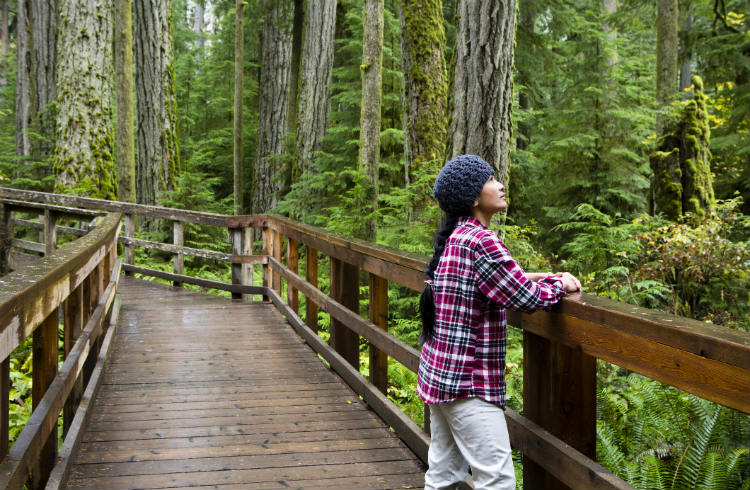
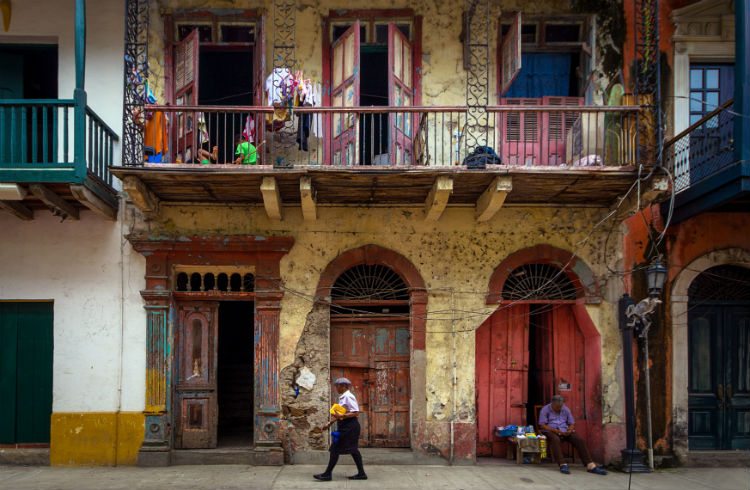
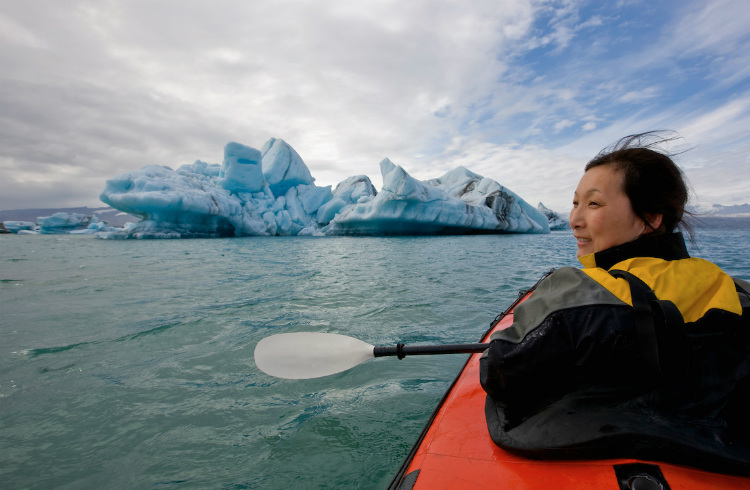
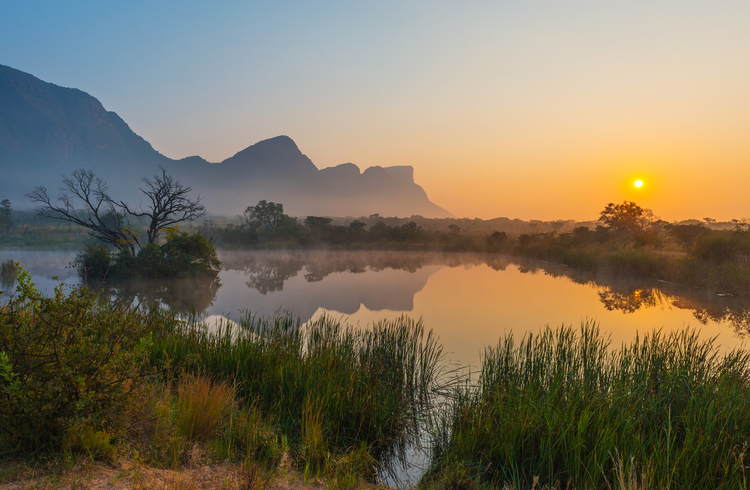
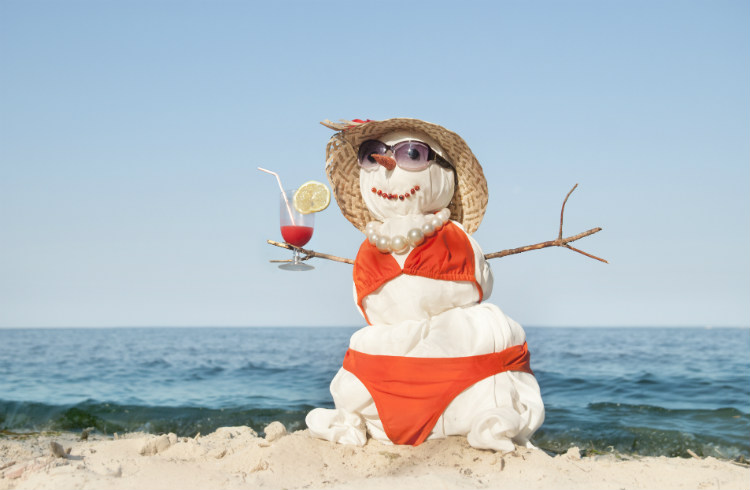

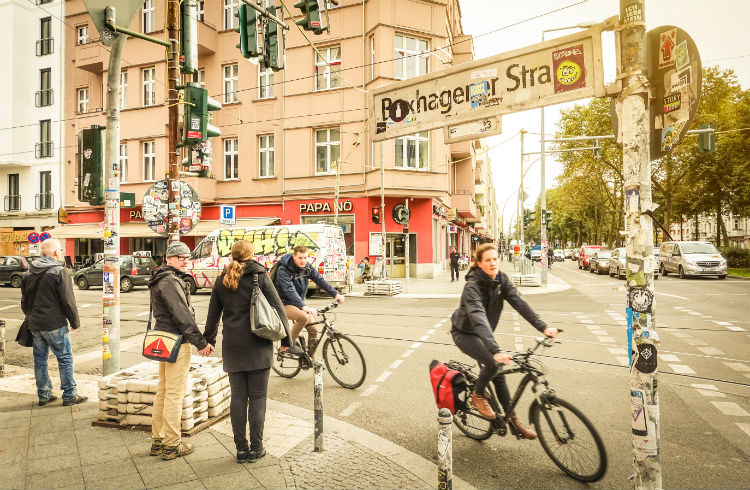
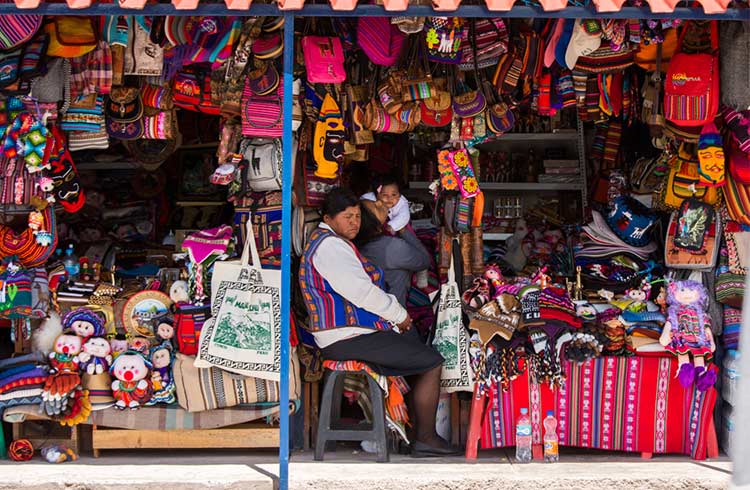
No Comments